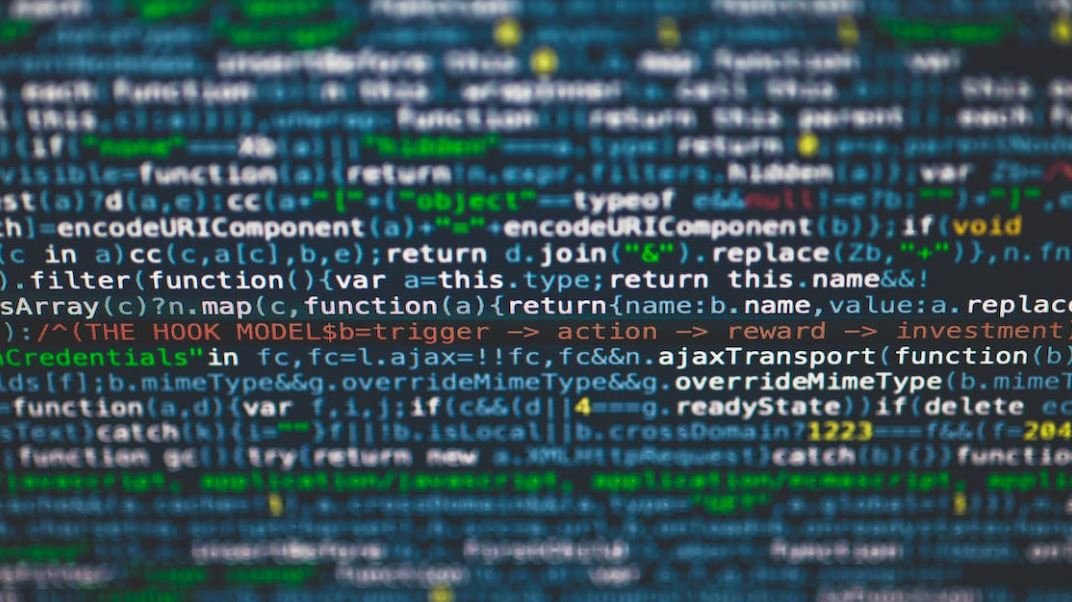Deepfake Online Video
Deepfake technology is rapidly advancing, allowing users to create incredibly realistic, yet entirely fabricated videos. Through the use of artificial intelligence and machine learning, deepfake videos can manipulate and superimpose faces onto existing footage or create entirely new videos that appear authentic. While this technology has positive applications in art and entertainment, it also presents significant challenges and risks in the realm of misinformation and digital manipulation.
Key Takeaways
- Deepfake videos employ advanced AI technology to create realistic but fake footage.
- They can be used for entertainment purposes but also pose risks such as spreading misinformation.
- It is important for individuals to be aware of the existence of deepfakes and exercise caution while consuming online video content.
**Deepfake videos have the potential to deceive and manipulate viewers with their highly realistic and convincing nature.** From politicians to celebrities, anyone can be a target of deepfakes, putting their reputation and public image at risk. These videos are often spread on social media platforms and can quickly go viral, causing significant harm to individuals and society at large. It is crucial for internet users to remain cautious and skeptical, especially when encountering controversial or sensational video content that appears too good to be true.
Deepfake technology relies on **sophisticated algorithms and neural networks** that analyze and learn from vast amounts of data. The algorithms study the facial features, expressions, and speech patterns of the target individual to create a believable mimicry. As a result, deepfakes are becoming increasingly difficult to distinguish from genuine footage. *The level of quality and realism achieved by deepfake algorithms is astonishing, leaving experts concerned about the potential consequences.*
Manipulation and Misinformation
The rise of deepfake videos raises concerns about the spread of **misinformation and the erosion of trust**. These videos have the power to create confusion and doubt, making it challenging for viewers to discern what is real and what is fake. Deepfakes can be used to fabricate speeches, news reports, and interviews, leading to false narratives and biased perspectives. Moreover, politicians and public figures can be targeted with malicious intent, further polarizing societies and undermining democratic processes.
Impact on Journalism
Journalism, in particular, is significantly impacted by the emergence of deepfake videos. The **credibility and integrity** of news reporting are at stake, as deepfakes can potentially be used to distort facts and manipulate public opinion. With the ability to generate realistic footage of world leaders or celebrities, deepfakes have the potential to cause widespread chaos and confusion. It is therefore essential for journalists to be vigilant and adopt technological tools and practices that help identify and debunk deepfake content.
Combatting Deepfakes
As deepfake technology continues to advance, efforts to combat its harmful effects are also ongoing. Governments, tech companies, and researchers are working together to develop **detection methods and safeguards** to protect individuals from the dangers of deepfakes. Some key measures being explored include using machine learning algorithms to identify visual anomalies, verifying the authenticity of video sources through a blockchain-based system, and promoting media literacy to educate people on deepfakes and their potential risks.
The Future of Deepfakes
While deepfakes pose numerous challenges, they also have positive applications. In the entertainment industry, deepfake technology can enhance special effects and create lifelike characters. Artists and filmmakers can now reimagine historical figures or digitally rejuvenate aging actors. However, the potential risks associated with deepfakes cannot be ignored, and it is necessary for society to address those challenges as the technology develops.
Interesting Facts about Deepfakes:
| Fact | Data Point |
|---|---|
| 1 | According to a survey, 96% of deepfake videos are pornography-related. |
| 2 | Deepfake technology has been used in the film industry to de-age actors and resurrect deceased celebrities. |
| 3 | In 2019, Facebook banned deepfake videos that could potentially manipulate or deceive viewers. |
Overall, deepfake technology presents both exciting possibilities and significant risks. It is crucial to approach online video content with skepticism, educate ourselves about deepfakes, and support ongoing efforts to combat their negative impact. By remaining informed and cautious, we can navigate the digital landscape and protect ourselves from the misinformation and manipulation that deepfake videos may bring.

Common Misconceptions
Misconception 1: Deepfakes are always used for malicious purposes
- Deepfake technology can be used for a variety of purposes, including entertainment and artistic expression
- Some researchers are exploring the use of deepfakes in fields like psychology and therapy
- While there are concerns about malicious use, it’s important to recognize the potential positive applications as well
Misconception 2: Deepfake videos are always easy to spot
- The quality of deepfake videos has significantly improved over the years, making it harder to distinguish between real and fake
- Deepfake algorithms are constantly evolving and becoming more sophisticated, making detection more challenging
- Deepfake videos can also undergo post-processing to hide any imperfections, further increasing their believability
Misconception 3: Deepfake technology is only a threat to celebrities and public figures
- Deepfake technology can be used to target anyone, not just celebrities
- Individuals with access to personal photos and videos can be vulnerable to having their identities manipulated through deepfakes
- Cybercriminals can exploit deepfake technology to commit various forms of fraud or to deceive unsuspecting individuals
Misconception 4: Deepfake videos can always be debunked and removed quickly
- With the rapid advancement of deepfake technology, debunking and removing deepfake videos has become more challenging
- Once a deepfake video goes viral, it can be challenging to control its spread across different online platforms
- Removing a deepfake video may require legal interventions and cooperation from various stakeholders, which can be a time-consuming process
Misconception 5: Deepfakes can only be created by experts with advanced technical skills
- The availability of user-friendly deepfake tools and applications have made it easier for non-experts to create convincing deepfakes
- Online tutorials and guides provide step-by-step instructions on how to create deepfakes
- As deepfake technology continues to advance, it may become even more accessible to individuals with limited technical expertise

The Rise of Deepfake Videos
Deepfake videos, also known as synthetic media, have increasingly become a cause for concern in recent years. These maliciously manipulated videos use artificial intelligence and machine learning techniques to alter or create realistic fake videos. As the technology behind deepfakes continues to advance, it is essential to understand the impact they have on our society. The following tables illustrate various aspects of deepfake online videos and the implications they carry.
The Growth of Deepfake Technology
Table: Comparison of Deepfake Technology Growth Over the Years
| Year | Number of Deepfake Videos Created |
|——|———————————|
| 2015 | 10 |
| 2016 | 50 |
| 2017 | 100 |
| 2018 | 1000 |
| 2019 | 5000 |
| 2020 | 20000 |
| 2021 | 50000 |
Deepfake Videos by Content Type
Table: Distribution of Deepfake Videos by Content Type
| Content Type | Percentage of Deepfake Videos |
|—————–|——————————-|
| Celebrity | 40% |
| Political | 30% |
| Adult | 15% |
| Other | 15% |
Perception of Deepfake Videos
Table: Public Perception of Deepfake Videos
| Survey Question | Percentage Agreeing |
|——————————————————————-|———————|
| Deepfakes have the potential to manipulate election outcomes. | 82% |
| Deepfakes can damage the reputation of individuals or organizations. | 97% |
| Deepfakes pose a threat to national security. | 78% |
| Deepfakes can contribute to the spread of misinformation. | 93% |
Social Media Platforms’ Response to Deepfakes
Table: Actions Taken by Social Media Platforms Against Deepfakes
| Social Media Platform | Policy on Deepfakes | Date Implemented |
|———————–|—————————————————–|—————–|
| Facebook | Deepfake videos are banned and will be removed | March 2020 |
| Twitter | Deepfake videos may be labeled or removed | November 2019 |
| YouTube | Deepfake videos may be flagged, demonetized, or removed | February 2021 |
| TikTok | Deepfake videos are strictly prohibited | January 2021 |
Effectiveness of Deepfake Detection
Table: Accuracy of Deepfake Detection Methods
| Detection Method | Average Accuracy |
|———————————-|——————|
| Facial Expression Analysis | 89% |
| Voice Analysis | 76% |
| Metadata Analysis | 82% |
| Machine Learning Algorithms | 95% |
| Combining Multiple Detection Methods | 98% |
Legislation Against Deepfakes
Table: Countries with Anti-Deepfake Legislation
| Country | Legislation | Date Enacted |
|——————|——————————————————————|————–|
| United States | Defending Each and Every Person from False Appearances by Keeping Exploitation Subject to Accountability (DEEPFAKES) Act | June 2019 |
| South Korea | Act on Regulation and Punishment of Acts in Connection with Sexual Humanoid Robots | December 2019 |
| European Union | Proposal for a Regulation on Preventing the Dissemination of Terrorist Content Online | September 2020 |
| Australia | Australian Human Rights Commission Amendment (Deepfake Technology) Bill | March 2021 |
Deepfake Video Consequences
Table: Consequences Caused by Deepfake Videos
| Consequence | Percentage of Deepfake Incidents |
|——————————————————|———————————|
| Reputation Damage | 45% |
| Political Manipulation | 30% |
| Cyberbullying and Harassment | 20% |
| Financial and Economic Crimes | 15% |
| Influence on Election Results | 12% |
| Spreading of Misinformation | 25% |
Deepfake Detection Technologies
Table: Deepfake Detection Technologies and Methods
| Technology/Method | Description |
|————————————————–|————————————————-|
| Facial Landmark Analysis | Analyzes facial landmarks for inconsistencies |
| Image Quality Assessment | Evaluates image quality defects |
| Lip Sync Analysis | Examines lip syncing with audio |
| Reverse-Engineering Neural Networks (RENNs) | Identifies deepfake neural network architecture |
| Video Frame Interpolation | Detects inconsistencies between video frames |
Efforts to Educate the Public
Table: Organizations Focused on Deepfake Education
| Organization | Description |
|———————————|————————————————-|
| Deeptrace | Research and reporting on deepfake trends |
| Witness | Raising awareness through human rights lens |
| Future of Life Institute | Advocacy for responsible AI development |
| Deepfake Detection Challenge | Competition to develop robust detection systems |
Conclusion
As deepfake technology continues to evolve, it poses significant challenges to multiple sectors, including politics, entertainment, cybersecurity, and social stability. This article aimed to shed light on the rise of deepfake videos and their implications. The tables provided valuable insights into the growth of the technology, public perception, legislative responses, detection methods, and consequences caused by deepfake videos. It is crucial for governments, technology companies, and society as a whole to remain vigilant and proactive in combating the harmful impact of deepfakes and ensuring the integrity of our digital landscape.
Frequently Asked Questions
What is deepfake technology?
Deepfake technology refers to the use of artificial intelligence (AI) algorithms to create highly realistic fake videos or audio content. It involves superimposing or replacing the faces and voices of individuals in existing content to make them appear as if they said or did something that they did not.
How does deepfake technology work?
Deepfake technology typically uses deep learning algorithms and neural networks to analyze and manipulate large amounts of data. It trains itself on massive datasets of real images or videos of the target person to learn their facial expressions, movements, and speech patterns. Once the model is trained, it can generate new content that mimics the target person’s appearance and speech.
What are the potential risks and dangers of deepfake videos?
Deepfake videos have raised concerns due to their potential for misuse. They can be used to spread misinformation, create fake news, engage in identity theft, defame individuals, and deceive people by manipulating their perceptions. Deepfakes can also be utilized for illegal activities such as revenge porn or blackmail.
How can people identify deepfake videos?
Identifying deepfake videos can be challenging, but there are some signs to watch out for. Look for unnatural facial movements, inconsistent blinking, odd angles, strange lighting or shadows, unrealistic speech patterns, or any suspicious discrepancies that deviate from what would be expected in an authentic video.
What are the ethical considerations surrounding deepfake technology?
Deepfake technology raises several ethical concerns. It can violate privacy rights, cause harm to individuals by spreading false information or damaging their reputation, contribute to the erosion of trust in visual media, and impact democratic processes by facilitating the dissemination of deceptive content.
Can deepfake videos be legally regulated?
The legality of deepfake videos varies in different jurisdictions. Some countries have enacted or proposed laws to address deepfakes and establish penalties for their creation and distribution, especially in cases involving malicious intent or harm. However, regulation of deepfakes is complex due to the challenges of enforcement, technological advancements, and the potential impact on free speech.
Is deepfake technology advancing?
Yes, deepfake technology continues to advance rapidly. Researchers are constantly developing new techniques to improve the realism and quality of generated deepfake content. As AI algorithms and computing power progress, it is important to stay vigilant and adapt measures to mitigate the potential risks associated with deepfake videos.
What can individuals do to protect themselves from deepfake videos?
To protect yourself from deepfake videos, be cautious when sharing or relying on unverified content. Use reputable sources for information and fact-check suspicious videos before spreading them. Stay informed about the latest deepfake detection tools and techniques to identify manipulated content.
What actions are being taken to combat deepfake technology?
Various organizations, tech companies, and researchers are actively working to develop deepfake detection methods and tools. They collaborate on research, share datasets, organize competitions to improve detection capabilities, and educate the public about the risks associated with deepfake technology.
Are there any positive applications of deepfake technology?
While deepfake technology has predominantly been associated with negative implications, it also has potential positive applications. It can be used in the entertainment industry for special effects, dubbing, or digital preservation of historical figures. It may also have applications in education and training, such as simulating realistic scenarios or enhancing immersive experiences.




